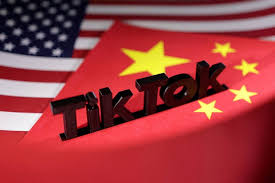Google said on Tuesday that an advanced geothermal project has started to feed carbon-free electricity onto the Nevada grid to power Google data centres there.
The first time electrons are put on the grid is a milestone that many start-up energy companies never accomplish, according to Tim Latimer, CEO and co-founder of Fervo Energy, a Houston-based geothermal partner in the Google project.
In an interview, Latimer stated, “I think it will be big, and it will continue to vault geothermal into a lot more prominence than it has been.”
Geothermal energy has long been seen as a viable countermeasure to climate change by the International Energy Agency. In a 2011 roadmap document, it was said that by 2050, geothermal energy may account for around 3.5% of the world’s electricity generation yearly, saving almost 800 megatonnes of carbon dioxide emissions.
However, this promise has not yet been fully realized. The news made today might be a tipping point.
With the help of this initial pilot, Fervo plans to start more initiatives that will supply the grid with a lot more electricity that is carbon-free. In southwest Utah, it is now finishing up the preliminary drilling for a 400-megawatt project.
In 2021, Google and Fervo Energy began collaborating on the development of next-generation geothermal power. Three wells at the location near Winnemucca, Nevada, are currently contributing roughly 3.5 megawatts to the grid since they opened for business.
More electricity is needed for the data centres, so Google also inked agreements for solar and storage. Its two Nevada locations are one close to Las Vegas and the other close to Reno. Google is considering the use of geothermal energy for additional data centres across the globe as part of its portfolio of carbon-free technologies, according to Michael Terrell, who oversees the company’s global decarbonization initiatives.
We sincerely hope that this will serve as a launching pad for far more sophisticated geothermal power to be made available to us and others globally, he stated.
Google declared back in 2020 that by 2030, all of its operations, no matter where they are located, would run entirely on carbon-free energy.
Huge corporations like Google, in the opinion of many energy specialists, can accelerate the use of clean energy.
Terrell pointed out that the business contributed to the growth of the wind and solar industries by being an early backer of those initiatives.
“The circumstances are really similar. We have discovered that, in order to reach our goal of having carbon-free energy available around the clock, more will be needed than just wind, solar, and storage, Terrell stated in an interview. To be honest, we will require this new generation of cutting-edge energy technology in order to transition power networks to carbon-free energy around the clock. When we considered our agreement with Fervo, we recognized a chance to contribute to the scalability of these technologies.
Although the United States is a global leader in the utilization of Earth’s heat energy for electricity generation, the U.S. Energy Information Administration states that less than 5% of the country’s utility-scale electricity generation is derived from geothermal sources. Hawaii, Nevada, Utah, Oregon, Idaho, and New Mexico provided the geothermal energy in 2022.
Due to the existence of steam or extremely hot water reservoirs near the surface in the West, those states are typically considered to have geothermal potential.
However, advancements in enhanced geothermal systems will help bring this energy source to areas where it has previously been deemed to be impractical, according to remarks made earlier this year by Energy Secretary Jennifer Granholm. Granholm was making an industrial funding announcement.
An initiative to achieve “aggressive cost reductions” in enhanced geothermal systems was started by the Energy Department last year. The DOE said this month that the country has the potential to produce 90 gigawatts of geothermal electricity by 2050, which is the equivalent of powering over 65 million homes when it announced plans to invest $44 million to promote the use of geothermal technology nationally.
Now, enhanced geothermal businesses—like Fervo—are pursuing heat that is found more below the surface, opening up possibilities in a lot more locations. Latimer worked as a drilling engineer for the oil and gas sector in the past.
Drilling techniques and technology advanced significantly during the shale boom, which made the US a leading producer and exporter of oil and gas. However, Sarah Jewett, vice president of strategy at Fervo, noted that very little technology has been transferred from the oil and gas sector to geothermal.
She claimed, “They were using all of the old, janky stuff from old-school oil and gas development, for lack of a better word.” “Basically, all we did was tell the oil field service companies to give us all of their best stuff.” To carry out our progress, we have been utilizing all of the most recent drilling technologies. According to her, this has resulted in significantly higher efficiency and cheaper costs.
Latimer discussed how Fervo is leading the way in horizontal drilling in geothermal reservoirs during a presentation at the Massachusetts Institute of Technology’s ClimateTech 2023. Fervo went around 8,000 feet down in Nevada, then he pivoted and bore about 3,250 feet horizontally.
Fervo can access a larger portion of the hot reservoir by drilling horizontally rather than repeatedly drilling vertical wells.
Fervo uses a subterranean pipeline to pump cold water down an injection well and hot rock to a producing well. Fracking, or the process of breaking apart the rock, creates the passage between. Before the water returns to the surface, it heats up to over 400 degrees Fahrenheit (200 degrees Celsius). When it gets there, it releases steam by transferring its heat to a different liquid that has a lower boiling point. A turbine is spun by the expanding steam pressure to generate power, just like in a coal or natural gas-fired plant. In a closed-loop system, the cooled geothermal water is reinjected into the injection well to restart the cycle.
Fervo reports that well testing conducted this summer was quite positive. In order to aid in the shift away from coal, oil, and natural gas and lower glasshouse gas emissions, Latimer intends to duplicate them as soon as possible and in as many locations as possible.
According to partner Rachel Slaybaugh, venture capital firm DCVC invested $31 million in Fervo last year. She claimed that the reason they succeeded was that Fervo was prepared to supply electricity to the grid before rivals had done so. Latimer’s prior experience operating a drill rig, according to Slaybaugh, is a positive because it was the proper team and they knew what kind of company they were establishing.
As the globe works to reduce its glasshouse gas emissions, geothermal energy is valuable as a clean technology that is “always-on” and can be ramped up before 2030, according to both Fervo and Google. The next project Fervo is working on, in Beaver County, Utah, is expected to start providing clean power to the grid in 2026 and be fully operational by 2028.
As we move away from fossil fuels, “this is unlocking something deeply sought after in the market today—round-the-clock renewable energy,” according to Jewett.


















